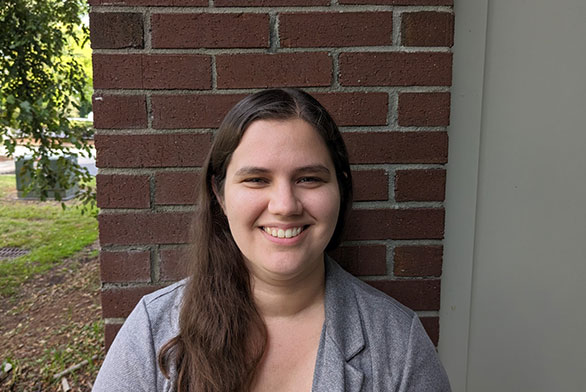Architectural Historian Virginia Harness (A11) On Helping to Preserve South Carolina’s Heritage One Building at a Time
September 5, 2023 | By Margaret Merritt
Virginia Harness (A11) was drawn to St. John’s College by way of the postal service. “There was a mailer from St. John’s [I saw in high school] that was extremely effective for me,” she recalls. “It said: ‘The following teachers will return to St. John’s next year,’ and then it said ‘Plato, Austin, Dostoyevsky ...’ They had all these authors listed, and I thought, ‘Well that’s intriguing.’”

Harness’ time at the college would bear out the idea that these texts served as teachers, providing a foundation for analyzing primary sources that she draws from to this day. It also served as a catalyst for Harness’ journey toward becoming an architectural historian—someone who studies buildings from a historical perspective—at the South Carolina Department of Archives and History (SCDAH). There, she evaluates buildings to see if they qualify for listing in the National Register of Historic Places. This designation brings recognition to historic sites while granting access to incentives like tax credits and grants.
With grandparents on opposite coasts, Harness spent her younger years traveling the United States and visiting historical landmarks such as President Abraham Lincoln’s home in Springfield, Illinois. These jaunts sparked her curiosity, and during one summer in college, she interned for the Lost Towns Project, a nonprofit that studies and conserves historical and archeological sites across Maryland and the Mid-Atlantic. Harness spent her break working at the ruins of a colonial mansion, which belonged to the family of prominent businessman Samuel Chew before being destroyed in a 1772 house fire. While identifying architectural features and labeling artifacts, she realized that she “was more interested in what was going on with the ruins than necessarily what was going on with the artifacts,” she recalls.
After completing St. John’s, Harness interned at the Brethren Historical Library and Archives in Elgin, Illinois, and then received her master’s from the University of Virginia in architectural history, with a certificate in historic preservation. Post-graduation, she served as an assistant architectural historian at PCR Services Corporation, a California-based environmental consulting firm, until 2016, when she began working for SCDAH.
Harness’ time at SCDAH has been filled with encounters with interesting and important sites. One such example is the Phillips community, a historic African American settlement community in Mount Pleasant, South Carolina.
“This type of community was established by formerly enslaved people after the Civil War, [when] their communities were able to buy land,” Harness says. “They remain, in some cases, still in the same families that purchased them. In one community we are working with, 85 percent of the residents of this community are descendants of the original farmers who purchased the land.”
Founded in the 1870s, the Phillips community made headlines in recent years when Charleston County called for widening South Carolina’s Highway 41, which cuts through the area. Working to help nominate the community to the National Register prompted Harness to think about the more intangible aspects of historic preservation. The Phillips Community Historic District is the first in South Carolina to be registered as a “traditional cultural property,” meaning it is considered important due to its cultural heritage—not, say, for its archaeological potential, connections to momentous events or people, or artistic or architectural merit.
“When you are talking about a traditional cultural property, or TCP for short,” Harness says, “it offers an opportunity to look a little bit more at some of those things that are not so tangible—like the cultural value that a specific group puts on a place—rather than thinking about fancy architecture.” Highway 41 is still slated for construction, but activists and state officials have since agreed on a revised plan that reduces the freeway’s impact on Phillips community.
Two aspects of Harness’ St. John’s education—working from primary sources (in her case, physical buildings instead of texts) and crafting arguments—play a central part in her current role. “A lot of what I do now is working on nominations for the National Register of Historic Places, and you must be able to explain very clearly about how whatever you’re talking about meets those National Register criteria—arguing for a site’s significance, arguing about how it retains its historic character,” she says. Learning the value of interpreting subjects from as many angles as possible has increased her ability to protect and preserve history in her state.
“Thinking about, like, ‘What is historic?’ and ‘What makes something historic?’ is important,” Harness says. “The program that we work with, the National Register, has these broad criteria, so it is open to a lot of interpretation. So, that is another aspect of my work, where you’re just constantly re-philosophizing about what does and does not matter.” (One example is when additions are made to a historic site over time, leading to questions about which property components are significant and how to count each building on site.)
While Harness’ day-to-day work often consists of filling out paperwork instead of exploring old buildings, its greater purpose is underlined by people and living history. “Not every property gets a big turnout [for a state Review Board meeting], but sometimes they do … and then people will often speak,” she says. “It just becomes evident how important that place is to those people.”

